|
|
|
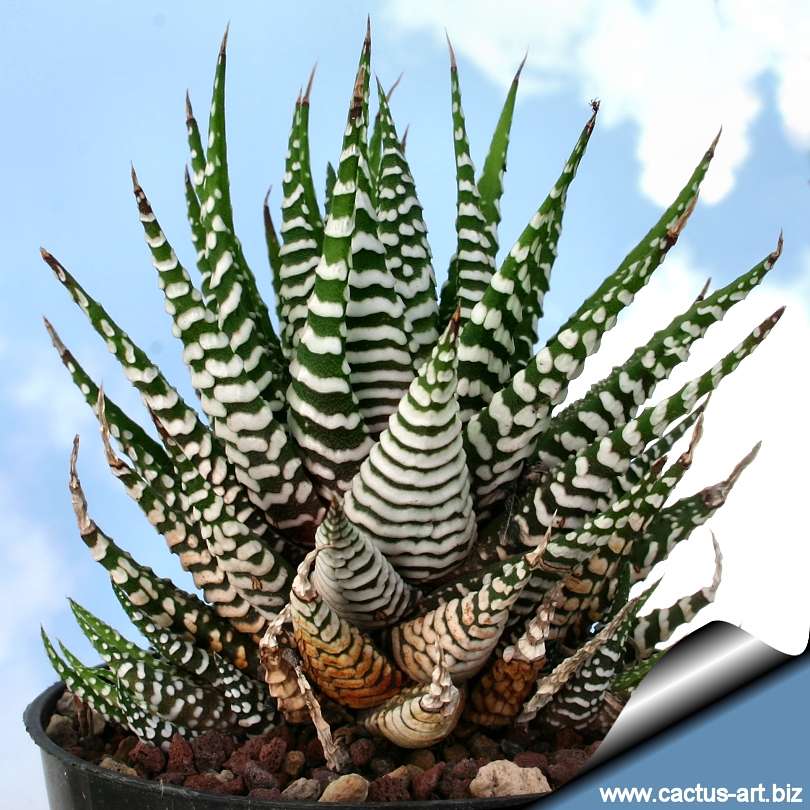
Haworthia attenuata cv. WIDE ZEBRA
This is probably the best cultivar of Haworthia attenuata
selected by Japanese growers, it is a beautiful plant with strikingly
marked leaves on the upper-sides with white dots and very large white
stripes on the under-sides.
|
|
Description: Stemless clustering
perennial-succulent, that eventually form large clumps. "Wide Zebra"
probably is the best cultivar of Haworthia attenuata
selected by Japanese growers, it is a rather large from with stiff deep
green leaves forming rosettes 10-15 cm wide. The leaves are strikingly
marked on the upper-sides with white dots and white stripes on the
under-sides.
Rosettes: 12cm diameter, 10-15 cm tall
Leaves: Dark green, pointed and strikingly banded.
Tubercles are "patterned" on the upper
surface of the leaves. The lower surface of the leaves have large white
transverse continuous bands of tubercles.
Flowers: White-greenish keels.
Bloom time: Can be ever blooming if you snip off each bloom when
it dies.
|
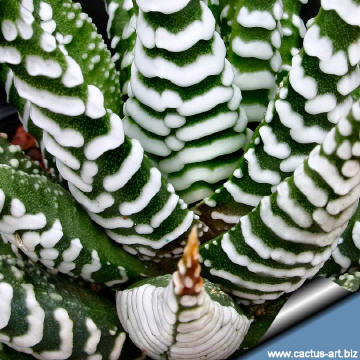 |
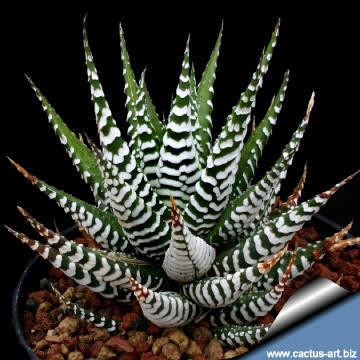 |
|
. |
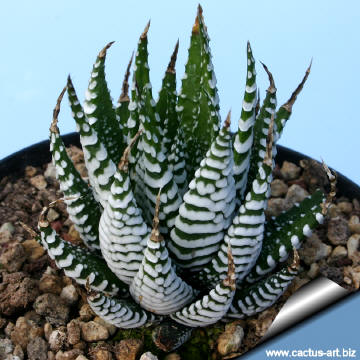 |
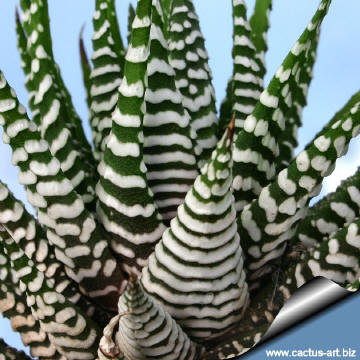 |
Propagation: Offsets that appear at the base
between the leaves, but this cultivar in not a
heavily clumping plant like most of the attenuata, and
only few shoots will be expected hence its relative rarity.
Leave the "pups" attached
to form a cluster, or wait until they are 1/3 the size of the parent and
then detach and plant.
|
|
Photo of conspecific taxa, varieties, forms and cultivars of
Haworthia attenuata.
Advertising
|
|
|
|
Family:
Asphodelaceae (Aloacee - Liliaceae)
Scientific name:
Haworthia
attenuata
(Haw.) Haw
cv. WIDE ZEBRA
Origin:
Garden origin (Nursery
produced cultivar)
Common Names include: Wide Zebra plant
Synonyms:
-
Aloe attenuata
Haw. (Basionym)
- Aloe
radula Ker Gawl.
-
Haworthia fasciata
(Willd.) Haw.
var. caespitosa
A.Berger
-
Haworthia pumila
ssp. attenuata
-
Apicra attenuata,
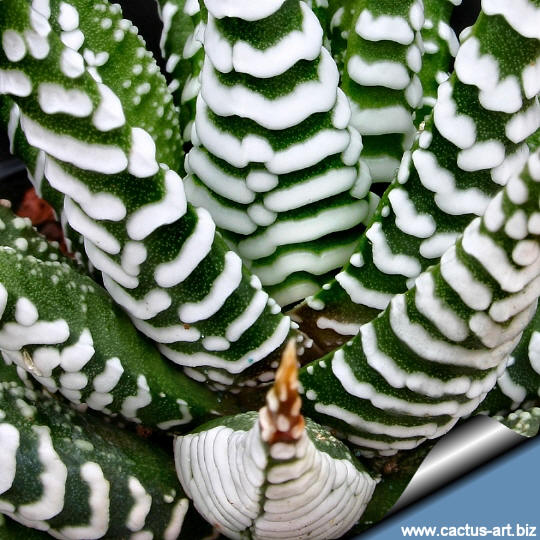
The leaves have large white transverse
continuous bands of tubercles.
|
|
|
|
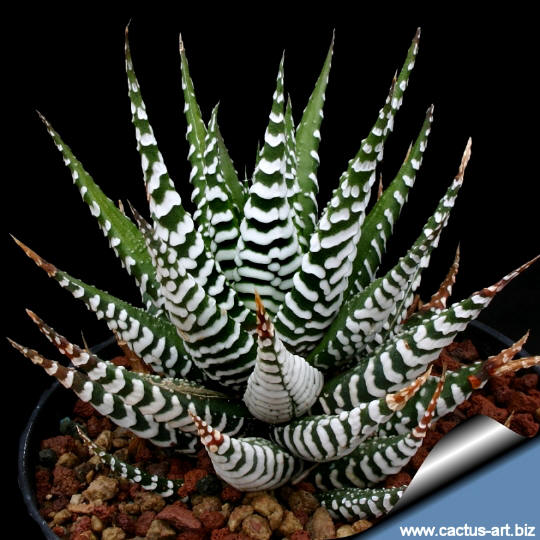
This cultivar in not a heavily clumping plant like
most of the attenuata, and only few shoots will be expected hence its
relative rarity
Cultivation: Very easy to grow and common. Need regular
water but do not water again until dry. Also, it is a species that is
dormant in the winter and require very little water (maybe even none)
during the cold months.
Frost Tolerance: Light frost protection
required. Minimum of 5ºC for safe growing (but hardy up to -5°C or
less.)
Sun Exposure: Requires light shade to bright light (protect
from strong
midday sun).
In shade the body colour will remain mostly green, while full sun will
darken it and give it red/brown body colour. Can be sunburned if moved
from shade/greenhouse into full sun too quickly. The amount of sunlight
it can withstand without scorching depends upon the how hot it becomes
in the summer in the locale in which it is planted. It will have more
colour if it receives more light. During the spring it may be able to
take full sun until the heat arrives at the end of spring. In an area
that has hot afternoon sun, it may be able to take full morning sun, but
requires afternoon shade or afternoon light shade.
|
|

 |
|